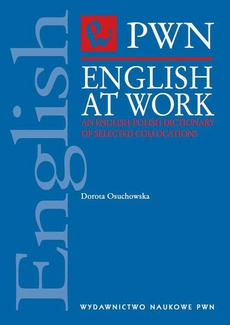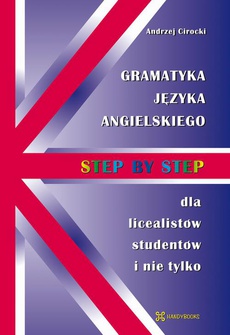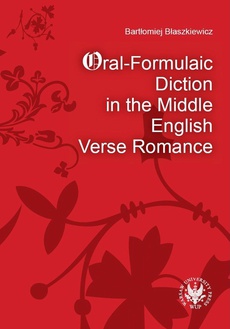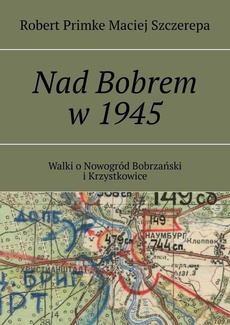POLECAMY
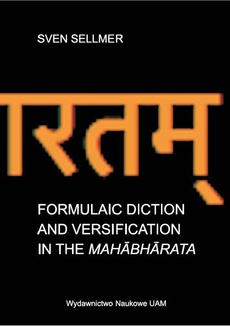
Formulaic Diction nad Versification in the Mahãbhãrata
Autor:
Format:
ibuk
Książka zawiera pierwszy opis języka formularnego w eposie sanskryckim pt.” Mahãbhãrata”, który bazuje na analizie komputerowej całego tekstu o objętości ok. 1 mln jednostek leksykalnych. Przedstawione zostają zarówno bazy danych skonstruowane przez autora jak i narzędzia analizy i wizualizacji, które zostały stworzone w celu jak najdokładniejszego uwzględnienia właściwości metrycznych. Analiza języka formularnego przebiega w pierwszym kroku systematycznie od najdłuższych do najkrótszych powtarzających się elementów struktury powierzchniowej, w drugim kroku zaś próbuje się zidentyfikować różnego typu ramy formularne o bardziej abstrakcyjnym charakterze. Myśl przewodnia pracy polega na tym, że regularności metryczne nie są traktowane jako dodatkowe, wtórne właściwości materiału językowego, lecz jako integralna część „sanskrytu epickiego”.
| Rok wydania | 2015 |
|---|---|
| Liczba stron | 260 |
| Kategoria | Język angielski |
| Wydawca | Wydawnictwo Naukowe Uniwersytetu im. Adama Mickiewicza |
| ISBN-13 | 978-83-232-2946-9 |
| Język publikacji | polski |
| Informacja o sprzedawcy | ePWN sp. z o.o. |
Ciekawe propozycje
Nad Bobrem w 1945
do koszyka
Nad brzegami Niemna
do koszyka
Nad brzegiem morza Ciemności
do koszyka
Nad dolną Wisłą. 1920 r.
do koszyka
Nad jeziorem Garda
do koszyka
Nad krawędzią
do koszyka
Spis treści
| 1. INTRODUCTION | 11 |
| 1.1 General part | 14 |
| 1.1.1 Epic Sanskrit | 14 |
| 1.1.2 Epic traditions | 17 |
| 1.1.3 The Mahābhārata | 17 |
| 1.1.4 Orality and writing | 21 |
| 1.2 Technical part | 24 |
| 1.2.1 Textual basis | 25 |
| 1.2.2 Metrical aspects | 27 |
| 1.2.2.1 Statistical survey | 28 |
| 1.2.2.1.1 Metrical patterns | 28 |
| 1.2.2.1.2 Word break patterns | 31 |
| 1.2.2.2 Heterotopes and Polarisation | 33 |
| 1.2.3 Databases | 40 |
| 1.2.4 Statistics and visualisation | 44 |
| 2. REPETITIONS AND FORMULAIC ELEMENTS | 49 |
| 2.1 Introduction | 49 |
| 2.1.1 Terminology | 49 |
| 2.1.1.1 The formulaic question | 49 |
| 2.1.1.2 Formulaic terminology in existing Mbh studies | 51 |
| 2.1.1.3 Repetitions | 54 |
| 2.1.1.3.1 Number of elements | 54 |
| 2.1.1.3.2 Types of repetitions | 56 |
| 2.1.1.4 Formulaic structures | 57 |
| 2.1.2 Strategy | 58 |
| 2.2 Full ślokas | 61 |
| 2.3 Hemistichs | 69 |
| 2.3.1 Types of hemistichs | 76 |
| 2.3.1.1 Accidental hemistichs | 76 |
| 2.3.1.2 Hemistichs as primary elements | 77 |
| 2.3.1.2.1 Hemistichs and pādas equally rare | 77 |
| 2.3.1.2.2 Hemistichs and pādas equally frequent | 79 |
| 2.4 Pādas | 81 |
| 2.4.1 Distribution of pāda repetitions | 84 |
| 2.4.1.1 Local repetitions | 85 |
| 2.4.1.2 Regional repetitions | 86 |
| 2.4.1.3 Global repetitions | 86 |
| 2.4.2 Content and function of pāda repetitions | 91 |
| 2.4.2.1 Syntactic roles of pāda repetitions | 91 |
| 2.4.2.2 Content of pāda repetitions | 95 |
| 2.4.3 Bond strength, isolation and embeddedness | 97 |
| 2.5 Sub-pāda repetitions | 103 |
| 2.5.1 Left-anchored repetitions | 105 |
| 2.5.2 Right-anchored repetitions | 107 |
| 3. FORMULAIC STRUCTURES | 109 |
| 3.1 Alternations | 109 |
| 3.2 Last words | 113 |
| 3.3 Templates | 123 |
| 3.3.1 Simple templates | 123 |
| 3.3.2 Complex templates | 124 |
| 3.4 Variations | 127 |
| 3.5 Formulaic 6exibility | 130 |
| 3.6 Crystallisation and semantic forking | 134 |
| 3.7 A stepwise approach to versi)cation | 139 |
| 3.7.1 Epic frames, on the example of A hit B | 141 |
| 3.7.1.1 Essential and )xed elements | 143 |
| 3.7.1.2 Essential and variable elements | 144 |
| 3.7.1.3 Optional elements | 147 |
| 3.7.1.4 Sifting the evidence | 151 |
| 3.7.1.5 Application of the model: one-liners | 152 |
| 3.7.2 Variation and regularity in epic frames | 159 |
| 3.7.2.1 Distribution of main constituents over pādas | 159 |
| 3.7.2.1.1 S|O in pādas a and b | 161 |
| 3.7.2.1.1.1 S-a–pādas | 161 |
| 3.7.2.1.1.2 O-b-pādas | 167 |
| 3.7.2.1.1.3 V-c–pādas | 171 |
| 3.7.2.1.1.4 Last pādas | 181 |
| 3.7.2.1.2 O|V in pādas c and d | 186 |
| 3.7.2.1.2.1 S|– in pādas a and b | 186 |
| 3.7.2.1.2.2 –|S in pādas a and b | 187 |
| 3.7.2.1.2.3 O-c-pādas | 188 |
| 3.7.2.1.2.4 V-d-pādas | 189 |
| 3.7.2.2 Additions and variations | 193 |
| 3.7.2.2.1 Absolutives and present participles | 193 |
| 3.7.2.2.1.1 Absolutive phrases | 193 |
| 3.7.2.2.1.2 Present participle phrases | 198 |
| 3.7.2.2.2 Sequential attacks | 198 |
| 3.7.2.2.2.1 Many on one | 200 |
| 3.7.2.2.2.2 One on many | 202 |
| 3.7.2.2.3 Types and numbers of arrows | 205 |
| 3.7.2.2.3.1 Types of arrows | 205 |
| 3.7.2.2.3.2 Numbers of arrows | 210 |
| 4. CONCLUSIONS AND PERSPECTIVES | 219 |
| APPENDICES | 224 |
| A1. Manually selected text units (MSTUs) | 224 |
| A2. Word break patterns (odd pādas) | 227 |
| A3. Word break patterns (even pādas) | 228 |
| A4. Vidura’s “gnomic hub” | 229 |
| A5. High-frequency primary hemistichs | 230 |
| A6. Pāda multiplets with freq. > 10 and top-2 a7nity < 0.2 | 231 |
| A7. Verses with three vocatives in end position | 234 |
| A8. One-liners belonging to the A-hit-B frame | 238 |
| REFERENCES | 240 |
| INDICES | 252 |
| Index of illustrations | 252 |
| Index of tables | 252 |
| Index of mathematical formulas | 254 |
| Index of cited passages | 255 |
| Index locorum | 257 |





